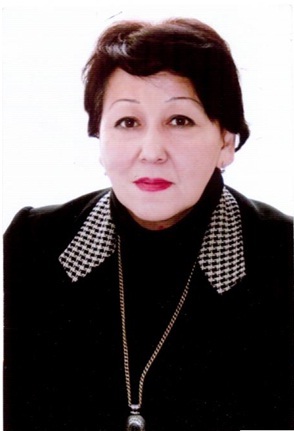- Main page
- News
SAULE ZHAKISHEVA, PROFESSOR OF THE HISTORICAL FACULTY: NON-Trivial Approaches and Methods Were Used
10/8/2021
On November 24 last year, the Head of State, Kassym-Jomart Tokayev, signed a decree "On the State Commission for the Full Rehabilitation of Victims of Political Repression." In accordance with this Decree, members of the working groups of the republican and regional levels - professional historians and lawyers - are provided with unlimited access to previously unavailable archival documents on the history of repressions in Kazakhstan during the Soviet period.
On the basis of a comprehensive and comprehensive analysis of documentary material, they consistently prepare proposals for declassifying a significant array of archival funds, lists of names of victims of repression for legal and political rehabilitation, taking into account the provisions of national and international law. A member of the working group of the State Commission for the Full Rehabilitation of Victims of Political Repression, Doctor of Historical Sciences, Professor of the Department of World History, Historiography and Source Study of the Faculty of History of the Kazakh National University named after al-Farabi Saule Aukenovna Zhakisheva told us about the work done.
- Saule Aukenovna, recently, on September 14, a republican online seminar was held on the issues of rehabilitation of victims of the campaign to eliminate bachelorhood and kulaks in Kazakhstan. Your monograph “Elimination of Bai Farms in Kazakhstan at the Turn of 20-30s. XX century: new approaches, methods and technologies ”, which aroused great interest among the audience. Please tell us in this research paper what new approaches are we talking about?
- The monograph was published in the publishing house "Kazakh University" in February this year. In this study, along with traditional, non-trivial approaches and methods were used in a comprehensive and systemic way (information approach to mass sources, content analysis, mathematical and statistical methods and computer technologies for processing historical data in a problem-oriented database). This allowed me to obtain completely new data on the process of liquidation of the institution of bayism in the republic, when the most authoritative and educated part of the Kazakh aul was practically destroyed. A broad interpretation of the data contained in the personal investigative files of the so-called "semi-feudal lords" repressed in 1928-1929 made it possible to conduct a source analysis at a higher research level, to more accurately characterize the trends and patterns in the development of the process of property confiscation and eviction of large owners and the elite elite of the Kazakh pre-collective farm aul. The introduction into scientific circulation as a mass source of a whole complex of previously unclaimed archival material of the Central State Archive of the Republic of Kazakhstan and the Archive of the President of the Republic of Kazakhstan, the use of mathematical and statistical methods of processing it allowed us for the first time to carry out a comprehensive development of such unexplored or poorly studied aspects of the problem of confiscation, such as the logic of the mechanism of repression in regarding the prosperous and wealthy farms of the Kazakh aul, alternative points of view on confiscation by the official authorities and the bais themselves, the peculiarities of the perception of the repressive policy of the state by the owners of the confiscated farms, the social demographic and social-property portrait of the expropriated bais.
- Judging by the feedback from the audience, your scientific work has yielded the expected result. This is true?
- I think that this is a significant contribution to the study of the history of the confiscation of Bai farms in 1928-1929, in general, the history of collectivization and repressive policy towards the Kazakh aul elite. So there is a result. The result of the study was the discovery of new unique quantitative data on the total number of confiscated farms, according to the categories of confiscation, the degree of literacy, influence and authority of the repressed bais, the degree of solvency of their farms, etc. 1928 of the year.
Quantitative methods and a computer database allowed me to reveal mathematically verified data on more than 1000 (in fact, more than 7000 farm owners and their families) confiscated and evicted outside the boundaries of their permanent residence, although official statistics claimed that there were 696 units. Until now, it is the last number that is indicated in the textbooks, which needs to be adjusted taking into account the information received. We have revised the mechanism of action of the authorities for the redistribution of confiscation groups, determined such quantitative indicators that cannot be obtained using the traditional descriptive method, such as the degree of authority and influence, the level of education of the repressed beys, the level of prosperity of their farms, etc. All this information is absolutely new and allows, as natural scientists would say, to assert new experimental data that claim to be discovered. All previous studies on the Baysk farms provided purely fragmentary data based on the descriptive method, did not contribute to the formation of an integral picture of the expropriation of the elite strata of the Kazakh aul.
- Thanks. Good luck with your work!
Interviewed by Kairzhan TUREZHANOV

